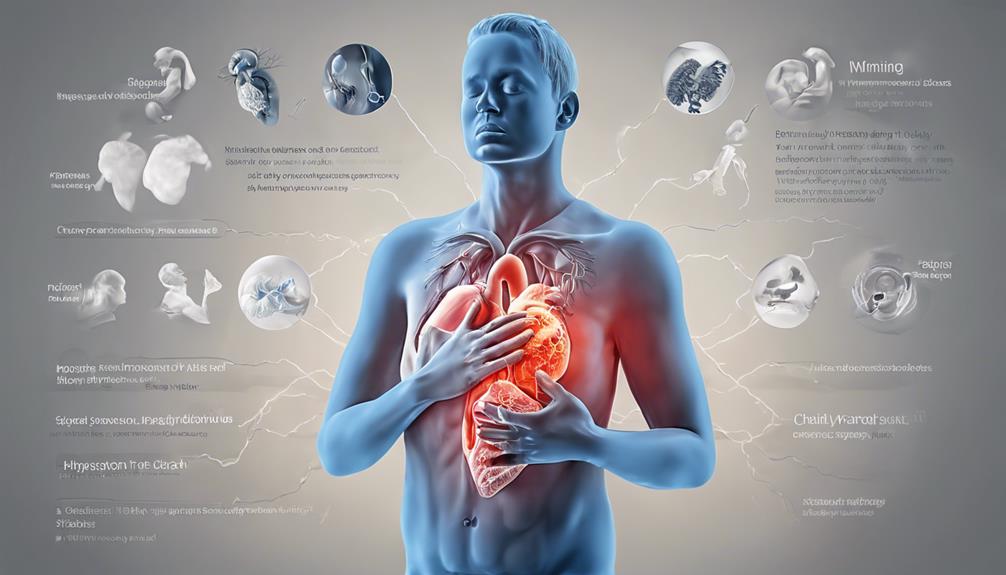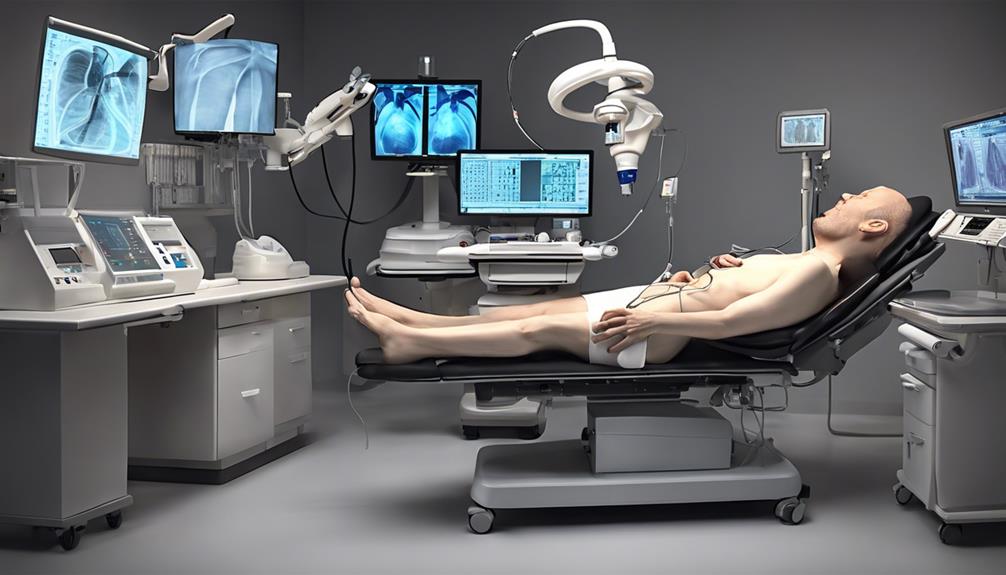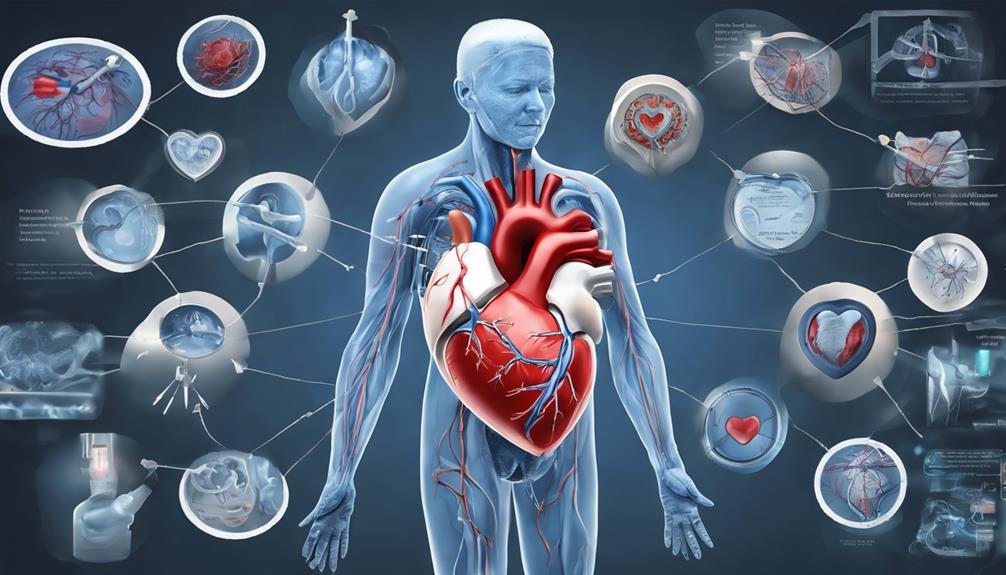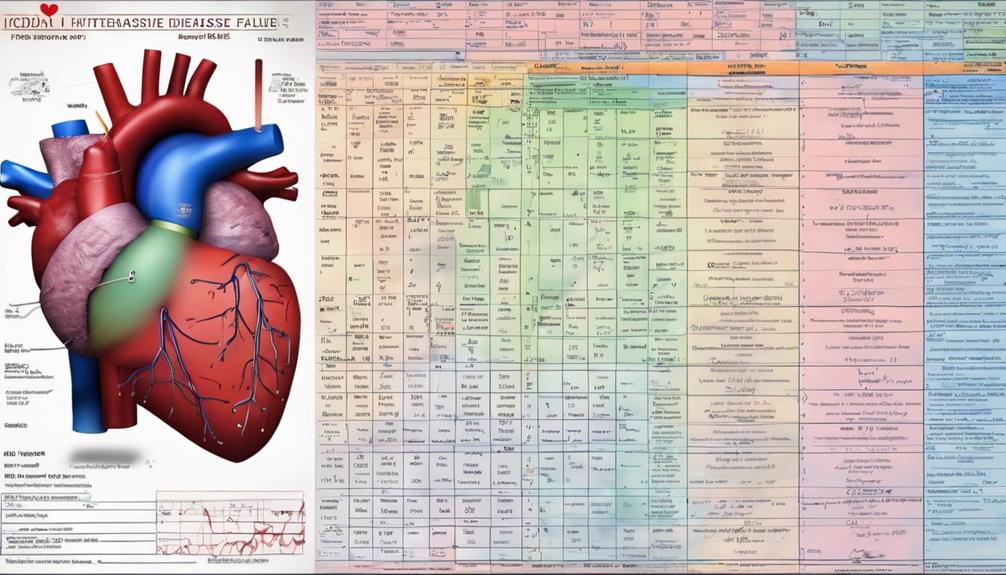In the complex world of medical coding, ICD-10 Hypertensive Heart Disease holds great importance as it highlights the link between hypertension and heart health. Understanding this condition thoroughly is crucial, emphasizing the need for precision and accuracy.
As we unravel the layers of this diagnostic code, a deeper understanding emerges, shedding light on the interplay between cardiovascular health and systemic hypertension. Let's explore the nuances and implications of ICD-10 coding for hypertensive heart disease, delving into its clinical significance and implications for patient care and management.
Key Takeaways
- ICD-10 code I11.9 for hypertensive heart disease in circulatory system
- Symptoms include chest pain, shortness of breath, fatigue, and swelling
- Risk factors: uncontrolled hypertension, lifestyle habits, family history
- Diagnosis involves tests like ECG, echocardiogram, blood tests, and imaging
Understanding ICD-10 Coding System
First, we must grasp the intricacies of the ICD-10 coding system to accurately classify and document medical conditions, particularly hypertensive heart disease. The ICD-10-CM code I11.9 specifically denotes hypertensive heart disease without heart failure and falls under the category of Diseases of the circulatory system as classified by the World Health Organization. Accurate documentation plays a critical role in the proper utilization of the I11.9 code.
To ensure precise coding, it's essential to adhere to the coding instructions and chapter-specific guidelines provided for I11.9. Understanding the Excludes 1 and Excludes 2 notes is imperative as they help in differentiating between related conditions that shouldn't be coded together with I11.9.
Symptoms of Hypertensive Heart Disease

Understanding the manifestations of hypertensive heart disease is crucial in recognizing and addressing potential health concerns associated with this condition. Symptoms of hypertensive heart disease encompass a range of signs that can indicate the presence of this condition. Below is a table summarizing these common symptoms:
| Symptom | Description |
|---|---|
| Chest pain | Feeling of pressure, tightness, or discomfort in the chest area. |
| Shortness of breath | Difficulty breathing, especially with physical exertion or lying flat. |
| Fatigue | Extreme tiredness and lack of energy that is not relieved by rest. |
| Swelling | Accumulation of fluid leading to swelling in the ankles or legs. |
Individuals with hypertensive heart disease may also experience irregular heartbeats, fluid retention leading to weight gain and bloating, as well as more severe symptoms like dizziness, lightheadedness, and fainting. Recognizing these symptoms promptly can aid in the early detection and management of hypertensive heart disease.
Causes and Risk Factors
Long-term high blood pressure damaging the heart muscle is the primary cause of hypertensive heart disease, with risk factors including uncontrolled hypertension, obesity, smoking, and a sedentary lifestyle. Chronic stress and excessive alcohol consumption can also contribute to the development of this condition.
Individuals with a family history of heart disease or hypertension are at a higher risk of developing hypertensive heart disease. Additionally, poorly managed diabetes and high cholesterol levels can increase the likelihood of developing this condition.
Understanding these causes and risk factors is crucial in the prevention and management of hypertensive heart disease. By addressing modifiable risk factors such as obesity, smoking, and sedentary behavior, individuals can reduce their chances of developing this serious cardiovascular condition.
Regular monitoring of blood pressure levels, adopting a healthy lifestyle, and seeking medical advice for managing hypertension are essential steps in mitigating the risk of hypertensive heart disease.
Diagnosis and Medical Tests

Assessing symptoms such as shortness of breath, fatigue, and swelling in the legs is crucial in the diagnosis of hypertensive heart disease, with medical tests including an electrocardiogram (ECG), echocardiogram, and cardiac MRI.
- Blood Tests: Measuring BNP levels can aid in diagnosing heart failure associated with hypertensive heart disease.
- Imaging Tests: Utilizing CT scans provides detailed images of the heart's structure to assess for any abnormalities.
- Blood Pressure Monitoring: Regular monitoring of blood pressure levels is essential in diagnosing and managing hypertensive heart disease.
- Holter Monitor: This device records the heart's electrical activity over a period, helping identify irregularities.
- Stress Test: Evaluating the heart's response to increased stress through physical activity can provide valuable information for diagnosis.
These diagnostic tools play a vital role in accurately identifying hypertensive heart disease, enabling healthcare providers to initiate timely interventions for effective management and improved patient outcomes.
Treatment Options and Management
Treatment options for hypertensive heart disease typically involve a combination of lifestyle modifications and medications prescribed by healthcare providers to effectively manage the condition. Lifestyle modifications include dietary changes, regular exercise, smoking cessation, and stress reduction techniques. Medications commonly used in the management of hypertensive heart disease include ACE inhibitors, beta-blockers, and diuretics, which help control blood pressure and reduce the strain on the heart. Regular monitoring of blood pressure and heart function is essential to track progress and adjust treatment plans as needed.
In more severe cases, surgical interventions like coronary artery bypass grafting (CABG) or valve repair may be necessary to address complications of hypertensive heart disease. Collaborative care involving cardiologists, primary care providers, and other specialists is crucial for a comprehensive approach to managing the condition. The ICD-10-CM code for hypertensive heart disease is I11.9.
| Treatment Options | Lifestyle Modifications | Medications |
|---|---|---|
| Dietary changes | Regular exercise | ACE inhibitors |
| Smoking cessation | Stress reduction | Beta-blockers |
| Diuretics |
Frequently Asked Questions
What Is Hypertensive Heart Disease Without Heart Failure?
Hypertensive heart disease without heart failure refers to cardiac conditions resulting from hypertension but not leading to heart failure symptoms. This condition encompasses issues like hypertensive left ventricular hypertrophy and hypertensive heart disease NOS caused by high blood pressure-induced structural heart changes.
Accurate documentation and coding are vital for diagnosing and treating this condition effectively. Understanding the difference between hypertensive heart disease with and without heart failure is crucial for precise coding in healthcare settings.
What Is the ICD-10 Code for I13.9?
We've got the answer for you. I13.9 is the ICD-10 code you're looking for. It's crucial for properly classifying patients with hypertensive heart and chronic kidney disease without heart or kidney failure.
Using this code accurately is key in healthcare billing and documentation. With I13.9, healthcare providers can ensure precise treatment and management for individuals with this specific condition.
What Is the ICD 9 Code for Hypertensive Heart Disease?
The ICD-9 code for hypertensive heart disease is crucial for accurate documentation and tracking in healthcare. Coding under 402-404 helps specify different manifestations, including heart failure.
Understanding 402.91 aids in proper medical records and billing. Accurate coding is essential for identifying cases of hypertensive heart disease. It provides specific codes for various aspects for precise documentation.
Proper coding ensures efficient healthcare services and billing processes.
What Is the ICD-10 Code for I13 20?
We assign I13.20 to denote hypertensive heart and chronic kidney disease without heart failure, accompanied by stage 5 chronic kidney disease or end-stage renal disease. This code precisely captures the complex interplay of hypertension, heart conditions, and advanced kidney issues.
Accurate coding is essential for proper diagnosis and billing. Capturing the nuances of conditions like these demands meticulous documentation and coding practices.
Conclusion
In conclusion, mastering the intricacies of ICD-10 coding for hypertensive heart disease is like learning a new language – it takes time, dedication, and practice.
Just like how a musician must practice diligently to play a complex piece flawlessly, healthcare professionals must continuously refine their coding skills to accurately document and treat patients with hypertensive heart disease.
With commitment and ongoing education, we can ensure precise coding, optimal patient care, and improved healthcare outcomes.









